Table of Contents
Introduction
Do dreams hold key to some power that, if unlocked, can open doors to greatness?
Have you ever wondered about the mysterious realm of dreams that we all experience during sleep? The concept of dreams has been the subject of numerous scientific studies and philosophical debates throughout history. It has been a mystery. It has been a source of fantasy.
When one is dreaming (and if one remembers that dream), it might be impossible to distinguish dream from reality. The dreamer is highly conscious but is disconnected from the environment at the same time. And but somehow the dreamer’s brain is creating a story, filling it with actors and scenarios, and generating hallucinatory images. (1)
Dreams can be powerful in unlocking creativity beyond one can imagine.
In 1936, Otto Loewi received 1936 Nobel Prize in Physiology or Medicine because of a recurrent dream he saw 14 years back. On Easter Saturday 1921, he dreamed of an experiment that that suggested how he could demonstrate neurotransmission in the lab. He woke up, scribbled the experiment onto a scrap of paper, and went back to sleep. Unfortunately, the next morning, he found that he couldn’t read his midnight scribbles. At the same time, to his disappointment, he could not remember his dream. That night, luckily, he had the same dream. And only this time, he immediately woke up and went to his lab to perform the Nobel prize winning experiment. (2)
The Kekulé dream, also known as the Benzene dream, is a famous example of a dream that led to a major scientific breakthrough. Friedrich August Kekulé was a German chemist in the 19th century who was trying to determine the molecular structure of benzene, a problem that had long puzzled scientists. As the story goes, Kekulé had been working on the problem for some time without success. One night in 1865, he fell asleep on his desk and had a vivid dream in which he saw atoms dancing around and linking up to form chains. The chains then began to take on a snake-like form, and one of the snakes began to bite its own tail. Kekulé suddenly woke up and realized that the dream had given him the key to the structure of benzene: the molecule was a closed ring of six carbon atoms, with alternating single and double bonds. The insight he gained from the dream was a major breakthrough in the field of organic chemistry and helped to establish the concept of chemical bonding as we understand it today. The Kekulé dream is often cited as an example of how the unconscious mind can solve problems in ways that the conscious mind cannot, and it has become a classic example of how dreams can lead to scientific discoveries.(3)
I am inspired to write this article, after an intense research that spanned over several months. I have no right to claim that I am expert in this topic. But, I want to share insights based on my understanding derived from reading tons of research papers on this topic.
Anatomy of Our Dreams
Before we understand and dissect the power of dreams, we have to first deeply understand sleep.
Why do we sleep?
Every activity that happens in our body needs energy. Energy generation is akin to fire. Biologically, we call this fire as inflammation. Inflammation leads to damage. If unchecked, such damages can accumulate and destroy life. Therefore, we have repair mechanisms.

Sleep is one such repair mechanism. When we sleep, all the systems slow down. And slowly repair work is carried out. Now, sleep can be either “cyclical” or “on-demand”. “Cyclical” sleep is basically the normal sleeping pattern we all have. We wake up in the morning and sleep at night. Cyclical sleep exists so that body can repair all the damages body has sustained when it was awake. That’s why we sleep daily. If you slept well, it just means that repair work was quite thorough. If you wake up tired, it means body hasn’t recovered optimally. Apart from cyclical sleep, sometimes you sleep during day time as well. This happens, when body demands repair based on accumulated damages. This is true if you have worked too hard. When critical level of damage is reached, body signals this by making you feel tired- so that you slow down and stop working. You also feel sleepy. This is “on- demand” sleep.
Most of us correlate physical work to exhaustion. But, please remember- exhaustion is an indication by the body that enough inflammation has generated and it’s time to slow down and allow repair. And, I would repeat here, every activity that happens in our body leads to inflammation. Each morsel of food we eat, each breath of air we inhale, each moment of thought we ponder upon- all lead to inflammation. Hence, it’s easy to get exhausted sitting in a chair and pondering over excel files on your laptop. And often this exhaustion can be more compared to physical labour. It’s no wonder that while the brain makes up only about 2% of the body’s total weight, it consumes about 20% to 25% of the body’s total energy expenditure.(4)
This is the main reason why people with chronic inflammatory diseases do not feel fresh after regular sleep.(5) Sleep is just not enough to control the inflammatory processes afflicting these patients. Hence, they always feel tired and don’t feel fresh when they wake up from sleep. You feel fresh after sleep only if tr has been optimal.
Stages of Sleep
We don’t suddenly go from wakefulness to deep sleep. It’s a very gradual process. All body processes become slower and slower as we slip into our sleep. Remember- they become slower, but they don’t stop. They become slow enough to keep life possible. Heart still keeps beating. Blood still keeps running. Brain continues maintaining its master control. But, this slowing down is absolutely critical for repair mechanisms to function optimally.
Even waking up is a gradual process. It is not sudden. Everything slowly starts pacing up as you slowly transition from sleep to wakefulness.
When we sleep, we go through several cycles of sleep. Biologists have identified that there are 4 stages that exist in any sleep cycle. In each stage, the level of activity goes lower compared to previous stage. This is true till Stage 3. Stage 3 is the state of deepest sleep. Stage 4 is when sleep cycle is ending- this is where activity level starts going up.(6) Each sleep cycle (from Stage 1 to Stage 4) lasts for about 40 to 130 minutes. In a night, a person goes through around four to six sleep cycles.
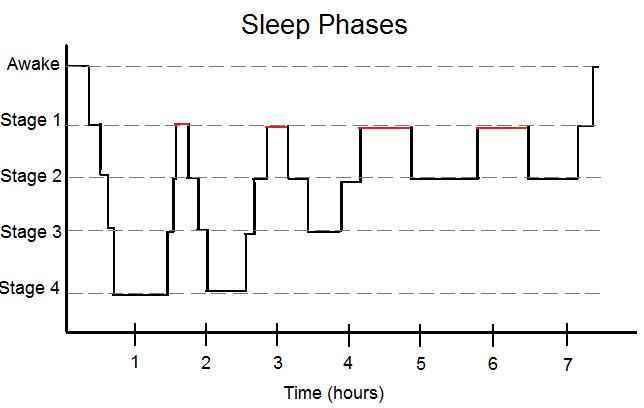
Not all sleep cycles are of the same length, but on an average, they last about 90 minutes each. As night passes, the length of stage 4 keeps increasing. And at some point, the level of activity touches the threshold for wakefulness and then you wake up. Stage 4 sleep is quite interesting. This is that part of sleep cycle where brain activity is the highest. When we are asleep, brain has a complex task. It has to slow down- but it also needs to actively keep a close watch on our body and coordinate all the signals necessary to keep all the organs functioning. Because of this, during sleep, different parts of brain are at different levels of activity depending on the requirement. Due to this complexity, at any given point in time during sleep, one fragment of brain might look like Stage 2 while other fragment of brain might be in Stage 4 of sleep.
But, in general, during Stage 4, overall brain activity is similar to what you find when one is awake. Electroencephalography (EEG) looks remarkably similar in active waking and REM sleep. Positron emission tomography (PET) studies show that global brain metabolism is similar between wakefulness and REM sleep.(7, 8) The key difference between REM sleep and wakefulness is that during sleep one is disconnected from current environment. A sleeping person, based on definition of sleep given by biologists, shows no meaningful responses to external stimuli, unless they are strong enough to cause an awakening. This feature is known as “high arousal threshold”, and it persists in REM sleep despite its brain activities showing similarities to wakefulness.(1) (Stage 4 of sleep cycle is known as REM because of “Rapid Eye Movements” noted during this stage. Stage 1, Stage 2 and Stage 3 of sleep cycle are known as NREM stages.)
Memory and Thoughts During Wakefulness and Sleep
When we are awake, brain has to deal with a intensely wide range of signals. We hear sounds. We see things. We smell. We touch. We taste. All these signals need are captured, analyzed and next steps are determined by our brain. While all these analyses are happening, we also think. Thoughts are packets of information from past that are then processed by our imagination to make sense of the current signals. For example, when we read any article, we are actually analyzing visual signals. Based on the past information stored in our memory, we think and analyze these visual signals and form new thoughts. These new thoughts quickly get added up into the database of earlier thoughts. Thus, there are millions of thoughts available in the database of our brain.
Conscious memory acts as an active filter, controlling access to this information database in our brain when we are awake.
When we are awake our brain cannot afford to analyze all the signals we receive. It prioritizes only those signals that are important and relevant at that point in time. Try driving in an empty road- it’s much easier to listen to a podcast and understand. But try listening to podcast when you are driving in a busy street- it’s tough isn’t it? Our evolution itself has been such that we are able gather richer and more important information that is needed for our survival. That’s why we don’t hear sounds that lot of animals can. That’s why we don’t see as profoundly through our eyes like many animals can. We don’t need the keen sense of smell of a dog. These are all too much of irrelevant signals for our brain. For survival, the fittest will prioritize important signals and ignore the rest. I have written a detailed article on this HERE.
This prioritization set- up is also true regarding thoughts. When we are awake, our brain prioritizes only those thoughts which impact the current task in hand. When you read about oil prices, your brain will seek those parts of your memory which have stored thoughts linked to similar topics from your past readings and learnings. Those thoughts which have deeper impact or are recurrently used are stored at easily accessible areas of memory. Those thoughts which have been rarely used and which had very less impact gets pushed outside the realm of conscious memory. These “deprioritized” thoughts get submerged into the subconscious memory. Conscious memory doesn’t allow brain to access those subconscious thoughts inorder to maintain speed and efficiency in decision making.

It is also important to note that there are some one-off memories which so deeply impactful that they can cloud all prioritized thought processing mechanisms. Even such memories get pushed into subconscious realms so that conscious memory can work optimally. These memories can potentially lead to psychological phenomena such a multiple personality disorders, obsessive compulsive disorders, psychosomatic disorders etc.
In nearly all cases, thought prioritization is an excellent strategy. Only relevant and impactful thoughts without noise makes it easier and faster to make decisions that have higher chances of success. This also conserves energy and minimizes inflammation. But they also lead to biases. The intelligence gets biased by impactful and recurrent information packets. Some thoughts that had been created long back, wasn’t impactful at that point in time and remained unused for a long time, might have the key towards solving the problem at hand. But it’s valid a trade- off, especially when you are awake and when the brain has to process so much more information constantly bombarded from all senses.
But, when you are falling asleep, the conscious memory’s control over thought prioritization system slowly starts loosening up. At the same time, a large number of external signals are also off. Eyes are shut- so no visual signals. You are not actively moving or touching or smelling or hearing. So, now, brain is facing two things at the same time-
- less control over what thoughts can arrive
- significantly less number of signals from external world
So, if the brain is active enough, it can now process and connect thoughts that were lying hidden in the subconscious memory. Do remember that some control over thought prioritization is still there until one goes into the deepest part of sleep. This means, if there was an intensely tough problem you were not able to solve before you went to sleep, the majority of the thoughts populating your brain, while you sleep, will still be linked to that problem. But now, brain can easily access those deprioritized thoughts hidden within subconscious memory that might be linked to the problem you are trying to solve.
What Are Dreams?
Dreams are bridges of thoughts between consciousness and unconsciousness. Consciousness is more like watching the news in real time based on stimuli from external world, while dreaming is more like watching a movie created by our imagination. These imaginations cannot have any other data source apart from what you store in your conscious and subconscious memories. Hence, people who are blinded after the age of 5–7 years seem to have visual imagination and dream with visual imagery throughout life, while blinding at an earlier age leads to absence of visualization in both waking and dreaming. (9, 10)
When we are awake, our thoughts on any topic are shaped by our imagination based on memories and new information about that topic. These wakeful imaginations are controlled by our conscious memory- the control is in the form of limiting the access to available memories.
Dreams are visual and auditory representation of the thoughts gushing through your brain while you are asleep. They are under-controlled imaginations since conscious memory is slowly losing its control as we fall asleep. As we fall deeper into sleep our access to subconscious memory becomes wider. Our brain can now combine various different pockets of information from various depths of subconscious and weave imaginations that can be profoundly bizarre. And sometimes some of these bizarre dreams directly lead to solutions for problems that haven’t been able to solve for years!
Issue is, we hardly remember what we dream. The conscious memory is the memory that helps you remember anything when you are awake. This conscious memory slowly loses its potency as you fall deeper into your sleep. So, although your brain is now able to access and analyze in ways that were impossible while you were awake, you can hardly remember any of these analyses once you are awake.
While I was explaining the sleep cycle, I explained that brain activity is highest during stage 4 of sleep cycle, also known as REM sleep. For a long time, it was believed that we dream only during the REM sleep. But current research findings show that this is not true. We do dream in all stages of sleep. It’s just that we remember few bits of our dreams from mostly those that occurred during REM sleep. And this is because, amongst all stages of sleep, conscious memory is more active during the REM sleep and hence has better ability to remember dreams from the REM sleep. If you understood this, it’s easy to reconcile with the recent extensive review of 35 studies by Nielsen that demonstrated that dream recall rates are considerably higher in REM compared to non-REM. (11) The same review also suggested that recall rates for non-REM may vary considerably depending on the sleep stage—dream recall is at its highest during Stage 1 (which is when we are just falling asleep) and its lowest during Stage 3 (when we are in the deepest possible state of sleep).
Also, brain activities are so much diverse and complicated that when we fall asleep, NREM and REM stages might exist at the same time in different parts of the brain.(12) Infact, if you think a bit on this, wakefulness, REM and NREM all actually exist at the same time at any point in time for any person. It’s a 3/3 matrix depending on brain activity.
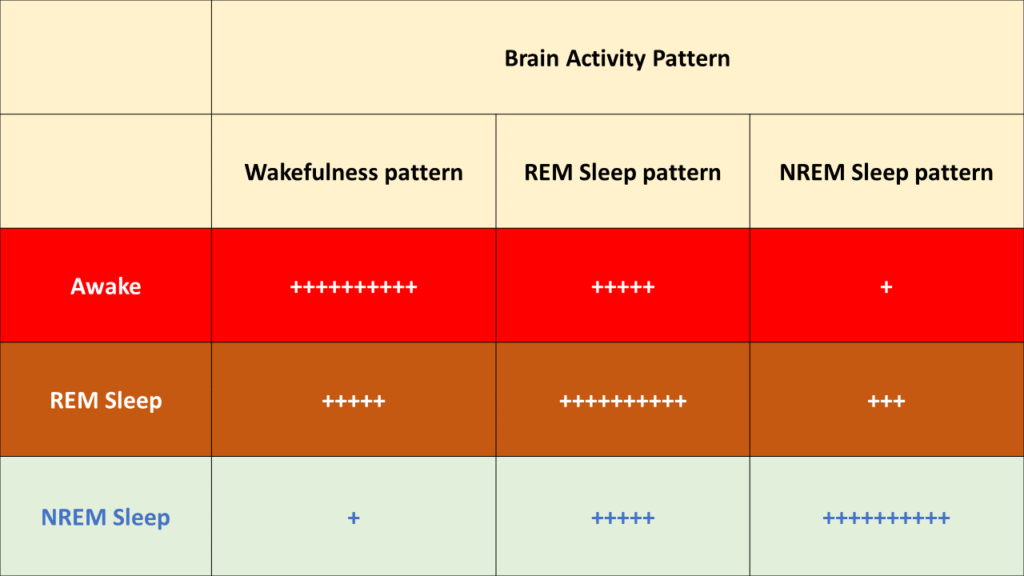
This matrix also explains genesis of day- dreaming. One can, sometimes due to exhaustion and sometimes in state of extreme relaxation, can achieve state of day-dreaming.
Unlocking Power Of Dreams
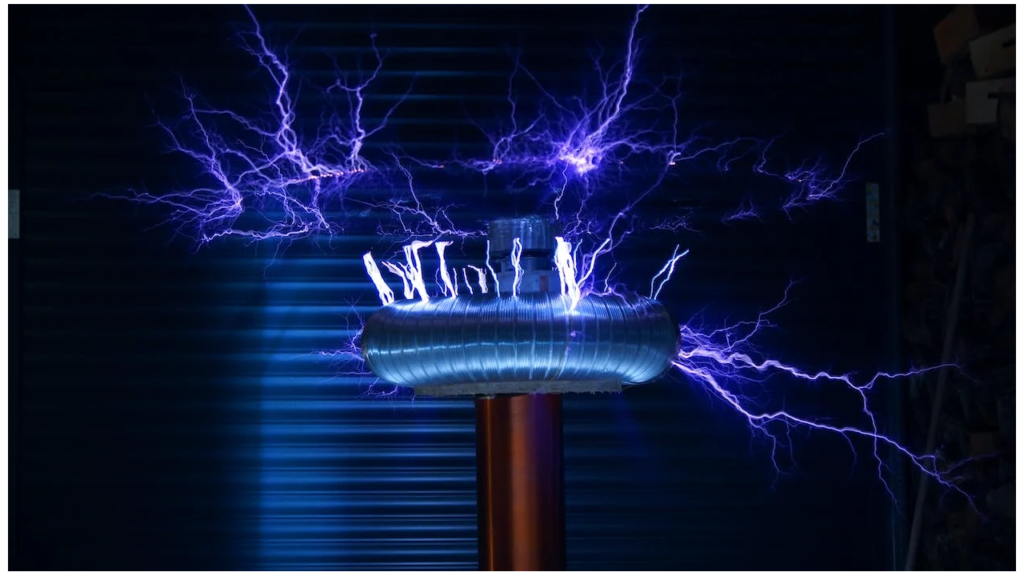
If you have read till now, you probably can yourself figure out how one might unlock the power of dreams. The power of dreams lies in the fact that when you are dreaming your brain can access and analyze memories that are not available to you when you are awake. When faced with an overtly challenging problem, such “out-of-the-box” analyses can compensate for the limitations of the biased analyses done by conscious brain.
There are three criteria that must be met if you want to truly unleash the power of your dreams:
- Not disturbing the repair system
Sleep is a very critical component of our biological repair system. If you are dreaming too much while you are asleep, it just means that your brain activity is too high. This will negatively effect efficiency of sleep in terms of repairing and healing. If you are remembering too many of your dreams, it means you are spending too much time in REM sleep. This is the least relaxing part of your sleep and you will feel tired after you wake up.
- Remembering dreams
As you delve deeper into your sleep, the power of your dreams to collect and analyze deeper and hidden thoughts surge higher. But, at the same time, the ability to remember those dreams goes down. Personally though, I would tend to think that if you want to use dreams to solve your problems, dreams from REM sleep are more relevant since conscious memory control is still a bit better at this stage to access subconscious thoughts more relevant to the problem you are trying to solve.
However, even the dreams from REM sleep are not easily recalled by everyone.
- Harnessing full power of brain while dreaming
As we sleep, slowly the analytical component of our brain also loses its power. So, although dreams do allow us to tap into hidden subconscious thoughts, the analyses might not achieve the quality of a conscious brain. We really would want our brain to be at its optimal best while analyzing these deeper subconscious thoughts, inorder to get high quality solutions. It has been thoroughly established that the brain faculties analyzing subconscious thoughts resulting into dreams are the same ones that analyze conscious thoughts when we are awake. Brain damage leading to impairments in waking have parallel deficits in dreaming as well. For example, damage to specific brain regions that underlie visual perception of color or motion are associated with corresponding deficits in dreaming as well. (13, 14)
The only way to achieve all three is to somehow access subconscious memory while you are awake. One of the popular methodologies is to undergo hypnotism. I won’t be covering the art of achieving state of hypnosis. I don’t have enough expertise in that area. But, my concern with hypnotism is that one might not remember what happened during hypnotism. And that, to me, is keeping away from the power of analytical awake brain. That concern might really be unfounded. But, I must admit, I have limited knowledge in that area.
One really powerful way of tapping subconscious memories while the conscious brain is fully active, is via practicing Yoga Nidra. Yoga Nidra is an ancient Indian style of meditation which is practiced lying down. Yoga Nidra is a meditative state in the Yoga tradition where, during the practice, the mind is completely withdrawn from wishing to act, or feeling emotions or exerting power of will. The practitioner becomes a neutral observer and eventually experiences loss of conscious control and an enhancement of sensory quality.
EEG studies show that Yoga Nidra can reach the deepest parts of subconscious by leading the practitioner into the stage 3 of sleep cycle, while brain being fully active. (15) PET scan studies shows that Yoga Nidra achieves virtual symmetry in the functioning of the brain (16), whereas in hypnosis it appears that certain parts of the brain are suppressed. (17)
Again, I don’t practice Yoga Nidra, nor am I an expert in that science. But, if any practice allows you to tap into your hidden subconscious memories without losing power of your brain, you will be able to unlock powers far greater that what even dreams could achieve.
Can dreams reflect past lives? Can they predict future?
Thoughts are packets of information designed by our imagination using available information. We now know that thoughts can remain hidden from consciousness, deep somewhere in those cryptic subconscious realms.
But technically we also know that thoughts are generated by electrical signals derived out of chemical interactions between neural circuits in our brain. Neural circuits are genetically coded. If so, then is it possible that some thoughts/memories can be passed from one generation to another? If dreams are product of electromagnetic signals in brain, can they be hacked and manipulated as one can hack a radio signal?
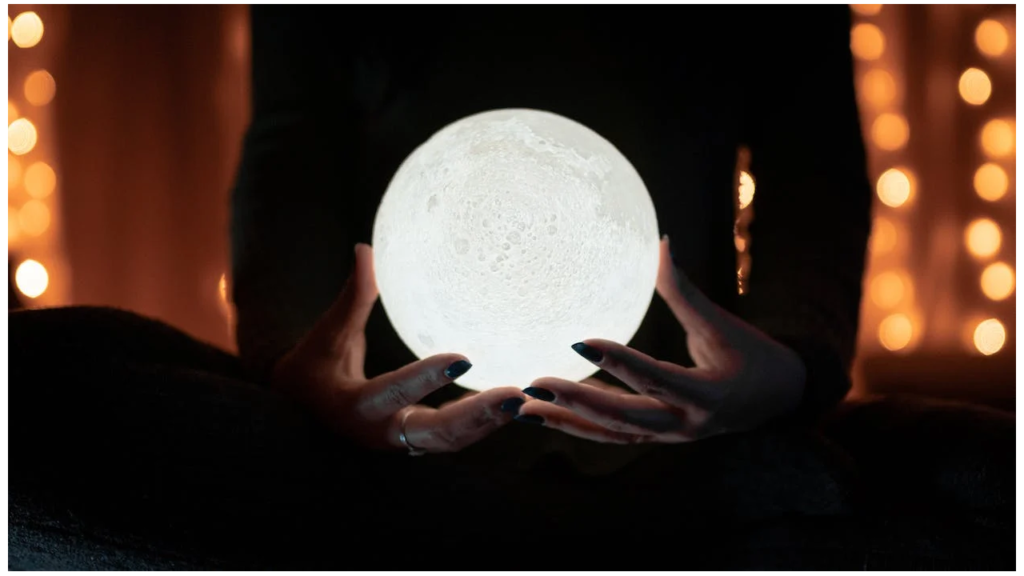
Whether dreams can predict future is a matter of a giant leap of faith, and will require couple of paradoxes from quantum mechanics to explain.
Mythologies and religious texts are full with stories showing how someone saw dreams and went on to achieve greatness and godliness by following advice from those dreams. In the Hindu epic Ramayana, King Janaka, the father of Sita, saw a dream in which he found a beautiful baby girl in a furrow in a field. He took the baby as a gift from the gods and raised her as his own daughter. The girl was later revealed to be Sita, who went on to marry Lord Rama and play a crucial role in the epic. According to Islamic tradition, Prophet Muhammad received many revelations from Allah through his dreams. One of the most significant dreams he had was the Isra and Miraj, where he was transported from Mecca to Jerusalem and then ascended to heaven. This experience was a turning point in his life and helped establish Islam as a major religion. According to the Gospel of Matthew, Joseph had a dream in which an angel appeared to him and explained that Mary’s pregnancy was the result of divine intervention. The angel instructed Joseph to marry Mary and name the child Jesus, who would save his people from their sins. Joseph followed the angel’s guidance and became an essential figure in the life of Jesus.
But, truly, these are all extremely tricky topics that bend science beyond the realm of evidences. Do I personally believe in past lives? I don’t know. All I do know is that across several cultures and religions around the world, past life is a common theme.
Earlier, when I was young, I used to consider all religious beliefs as myths. I grew up as an atheist and hard- core rationalist. But, as I read more and questioned and observed, I now realize that beliefs that don’t have evidence might not be incorrect. We just might not have found the evidence to prove those belieds.
I am not suggesting that we should start believing everything and anything. But, it will be really foolish to think that civilizations that existed before us were not scientific. It’s really impossible for me to believe that science was at its infancy when Egyptians built the pyramids or the Mayans published their astronomical calendars. The accuracy with which Hindu seers had written about location of stars and planets and predicted planetary movements thousands of years ago, still hold accurate.

We will discover more and waste a lot less time if we try disproving what is believed, rather than simply disbelieving and not testing at all.
As science is progressing, we are simply rediscovering what was already known and practiced. Fasting was just a religious gimmick for a long time. But now fasting has been proven scientifically as a method to combat numerous diseases including cancer. Gotra System practiced by ancient Hindus now seems to be the genetic shield that helped prevent so many autosomal recessive genetic diseases. Water in temples are stored in copper or silver vessels. We now know that its an excellent way of keeping water germ free.
Religion, to me, was an important channel for the scientists in ancient times to ensure adoption of healthy practices across communities at population level. By means of customs, rituals and traditions several religions successfully convinced communities to adopt scientifically sound ways of living healthier and better lives, without requiring people to really understand the true scientific logic. That’s the power of belief!
Science, to me, is also a matter of belief! And so is history! We blindly believe what is written in our text books. I never performed Michelson Morley experiment to check if ether is truly a myth. But I blindly believe that there are scientists who have tested and verified and that those tests were correct. I was never there to see if someone really went to Moon. But I believe this as an unquestionable fact. Aren’t these examples of believing something blindly?
I know there will surely be readers who would furiously disapprove of me seeing how I am sounding religious. But, trust me, I am not religious at all. I just know that I don’t know a lot of things. And I have learnt not to underestimate our ancestors.
In summary
When we are awake, our brain is hammered by multitudes of information from our surroundings. To ensure efficiency, brain needs to be selective and filter out all those signals that are not important. Given the noisy nature of conscious world, brain needs to be selective in terms of thoughts as well. That’s why brain gets to access only those thoughts that are offered by conscious memory. Conscious memory is efficient and stores only relevant, impactful and repeatedly used thoughts. All other thoughts get stored in the depths of subconscious. This system allows brain to work faster and make efficient decisions by using only important information and filtering out the rest. But, this thought filtering system introduces bias. Most often this bias works out well and we easily solve most of our problems. But clues to some of toughest and seeming unsolvable problems might remain hidden within those ignored thoughts that are shoved into the inaccessible depths of subconscious memory.
When we sleep, conscious memory starts losing its guard in terms of filtering thoughts. Once this happens, more and more thoughts from subconscious start flowing in. Also, when we sleep there is significant reduction in the number of incoming signals from outer world. This allows brain to analyze all these unfiltered thoughts from subconscious. Imagination then interplays with these unfiltered subconscious thoughts leading to generation of images and sounds which we see as dreams.
Dreams have access to subconscious thoughts. But, we mostly don’t remember our dreams. Also, brain is not powerful enough while we are sleeping. If, through some means, we can access our subconscious thoughts while brain being fully active, we might be able to solve problems we couldn’t earlier. Our imaginations would be much more vibrant and expansive in such states which can lead us to disruptive innovations. It seems Yoga Nidra might be an effective technique to tap this awesome power of dreams and unlock our subconscious, while enjoying full power of an active brain to analyze the thoughts from subconscious.
Bibliography
10. Hollins M. Styles of mental imagery in blind adults. Neuropsychologia. 1985;23(4):561-6.



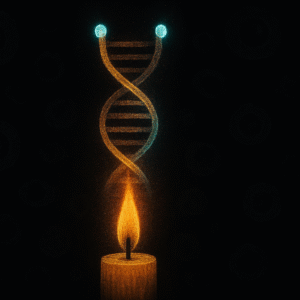

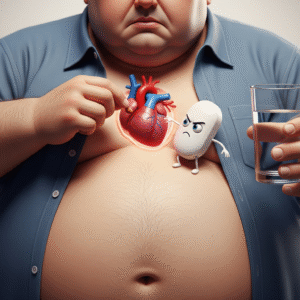
Itís nearly impossible to find well-informed people for this topic, but you seem like you know what youíre talking about! Thanks
Yay google is my queen helped me to find this great internet site! .
helloI like your writing very so much proportion we keep up a correspondence extra approximately your post on AOL I need an expert in this space to unravel my problem May be that is you Taking a look forward to see you